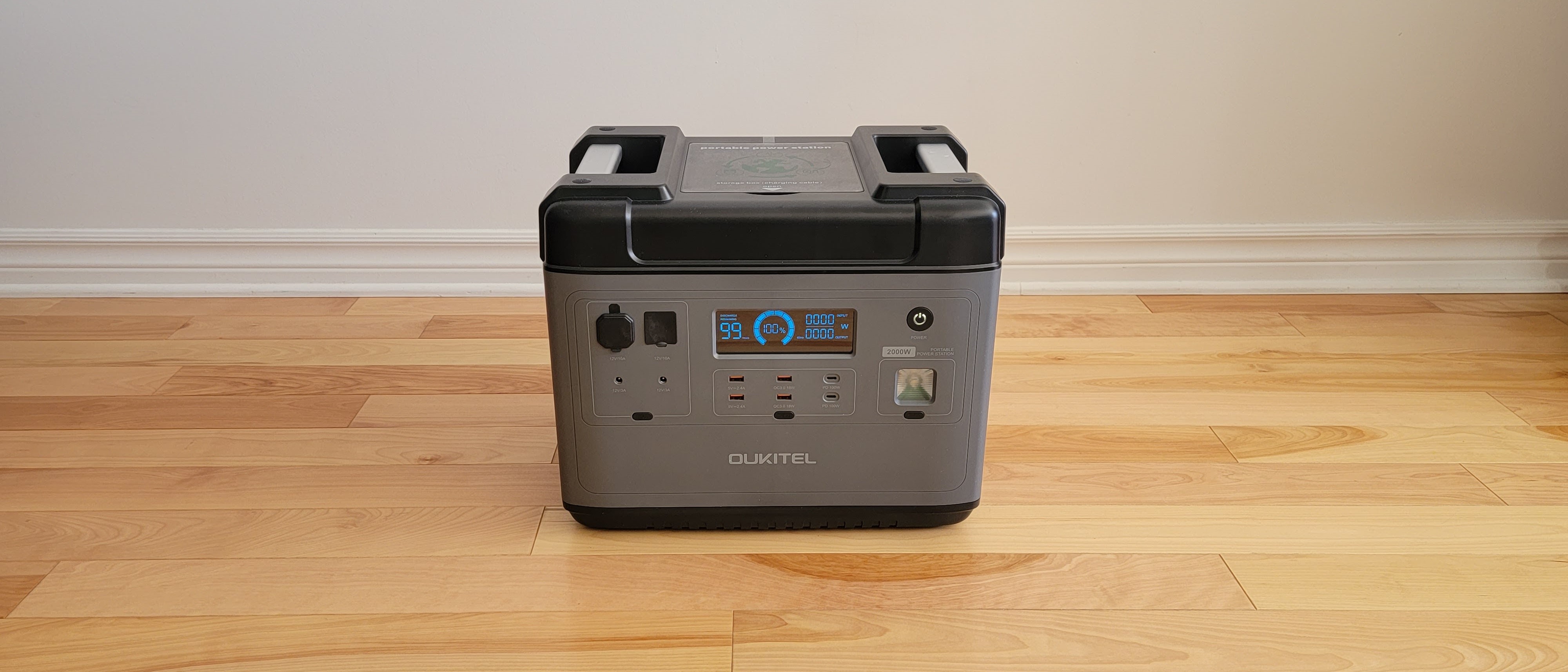TechRadar Verdict
The Oukitel P2001 incorporates the best one can get in terms of battery technology. But it is it’s versatility with features such as UPS and fast charging that makes it stand out from the competition.
Pros
- +
Over 2000 charge cycles
- +
Plenty of output sockets
- +
Fast charging
- +
UPS mode
- +
Great inverter efficiency
Cons
- -
Always-on display
Why you can trust TechRadar
Two-minute review
Oukitel made a splash last year with a monstrous smartphone featuring a 15Ah battery. Fresh from this tour de force, it is jumping into the world of high-capacity power stations with the P2001. This space is already crowded with the likes of Bluetti and Ecoflow. Oukitel has a different proposition with a back-to-basics approach that promotes simplicity over fancy features. This will surely please many customers looking for an easy-to-use product but with a lot of capacity both for the battery and the AC inverter.
Oukitel has a Kickstarter campaign for the P2001 where it can be yours for a pledge of $1000, which is half of its $2000 MSRP. The portable power station has a 2000W AC inverter and a 2000W/hr battery which is more than enough to power small appliances for a couple of hours. Moreover, the included LiFePo4 battery can provide at least 2000 charge cycles before the capacity drops to 80%.
Other key features are the rugged case, very fast charge time, a simple LCD, 2W LED light and charging from a solar panel. Turning on an AC socket can be done in only two steps making the P2001 ideal in an emergency. Oukitel is betting that having a product with a simple user interface and great power performance will hit a chord with gleeful customers. There is no question that it can reach that goal with a good product and the proper customer support.
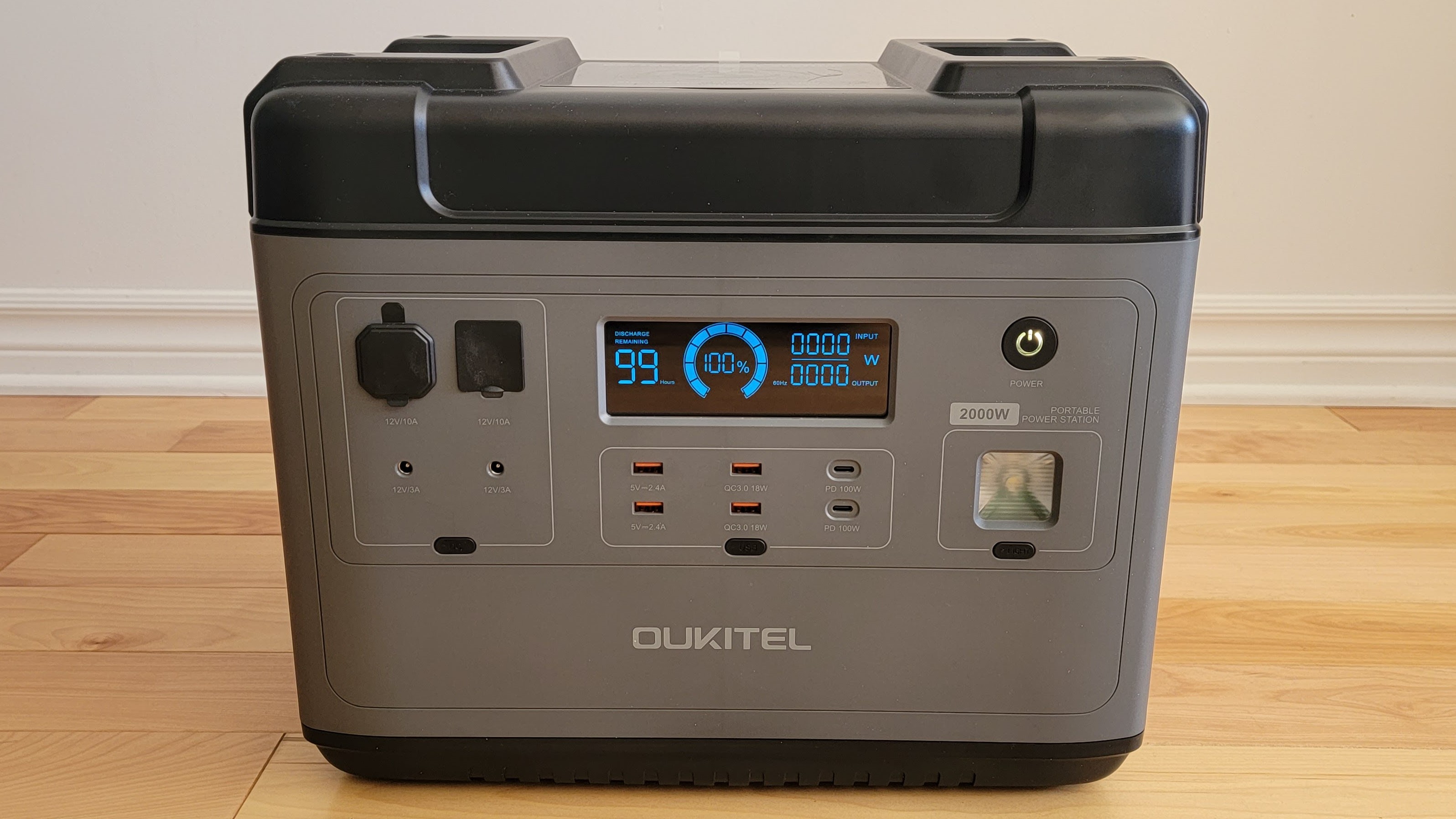
Design
As with many heavy products, the P2001 ships in a sturdy carton box that will guarantee its delivery in an excellent state. There isn’t much inside the box apart from the power station. The only supplied accessory is an AC cable which is stored in a handy compartment on top of the case. There is also the customary user manual that explains clearly how to use features of the P2001. The black and grey case feels solid and has vents located on each side providing airflow to four large fans. Four rubber pads prevent the case from sliding while two aluminum alloy bars on the top serve as handles. The unit measures 39cm x 28cm x 33cm and weighs 22kg.
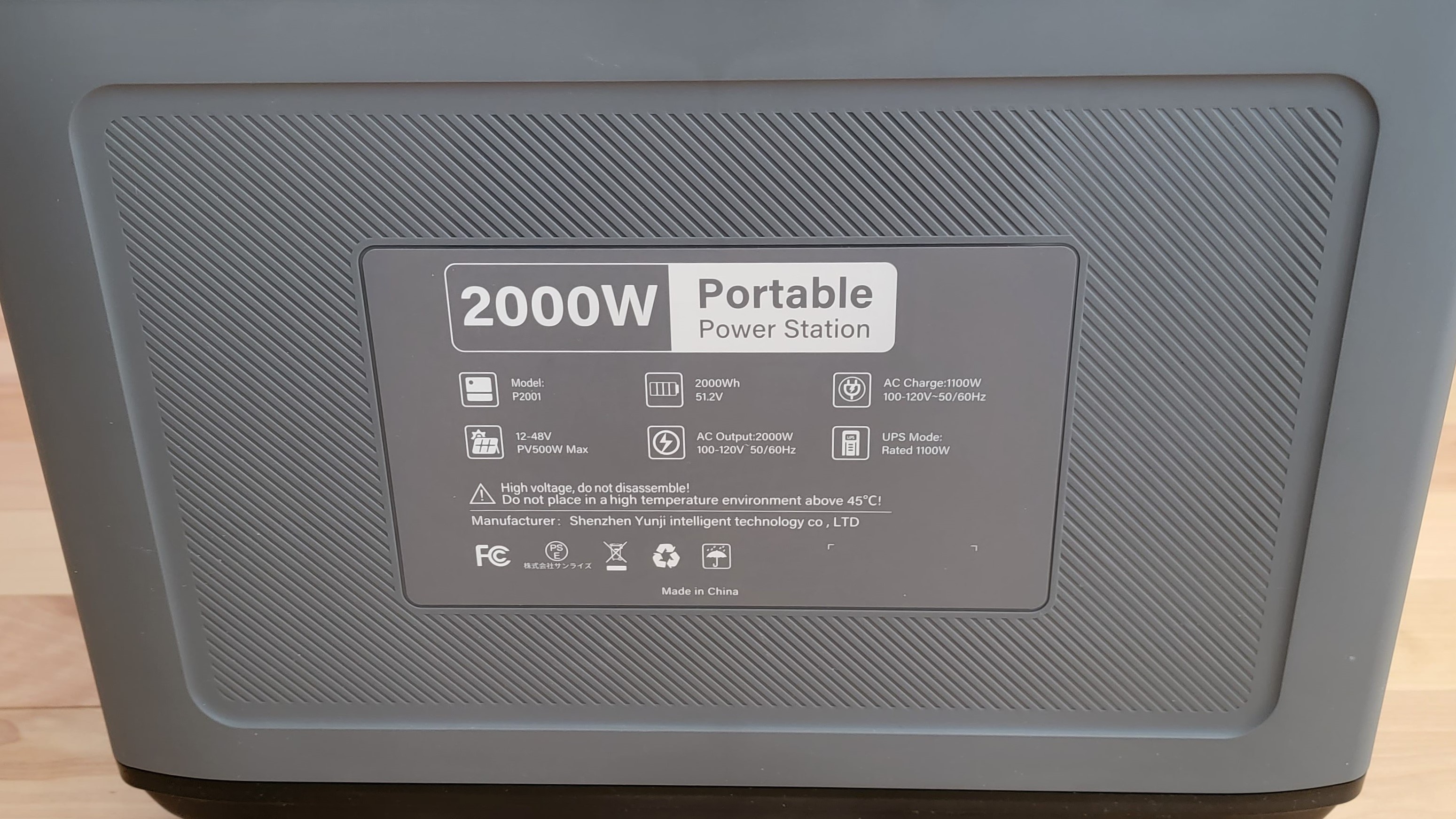
The pure-sine AC inverter is rated at 2000W and can exceed twice this value in short durations. With a battery capacity of 2000W/hr, the P2001 will provide power to many home appliances over a relatively long time period. The LiFePo4 chemistry used is one of the best in terms of endurance but comes with issues such as a lower energy density, translating into a heavier product when compared to Lithium Polymers. The unit is turned on by pressing a large power button located next to the display. The station has a 1100W AC charger built-in that adds to the weight but allows faster charging compared to an external charger.
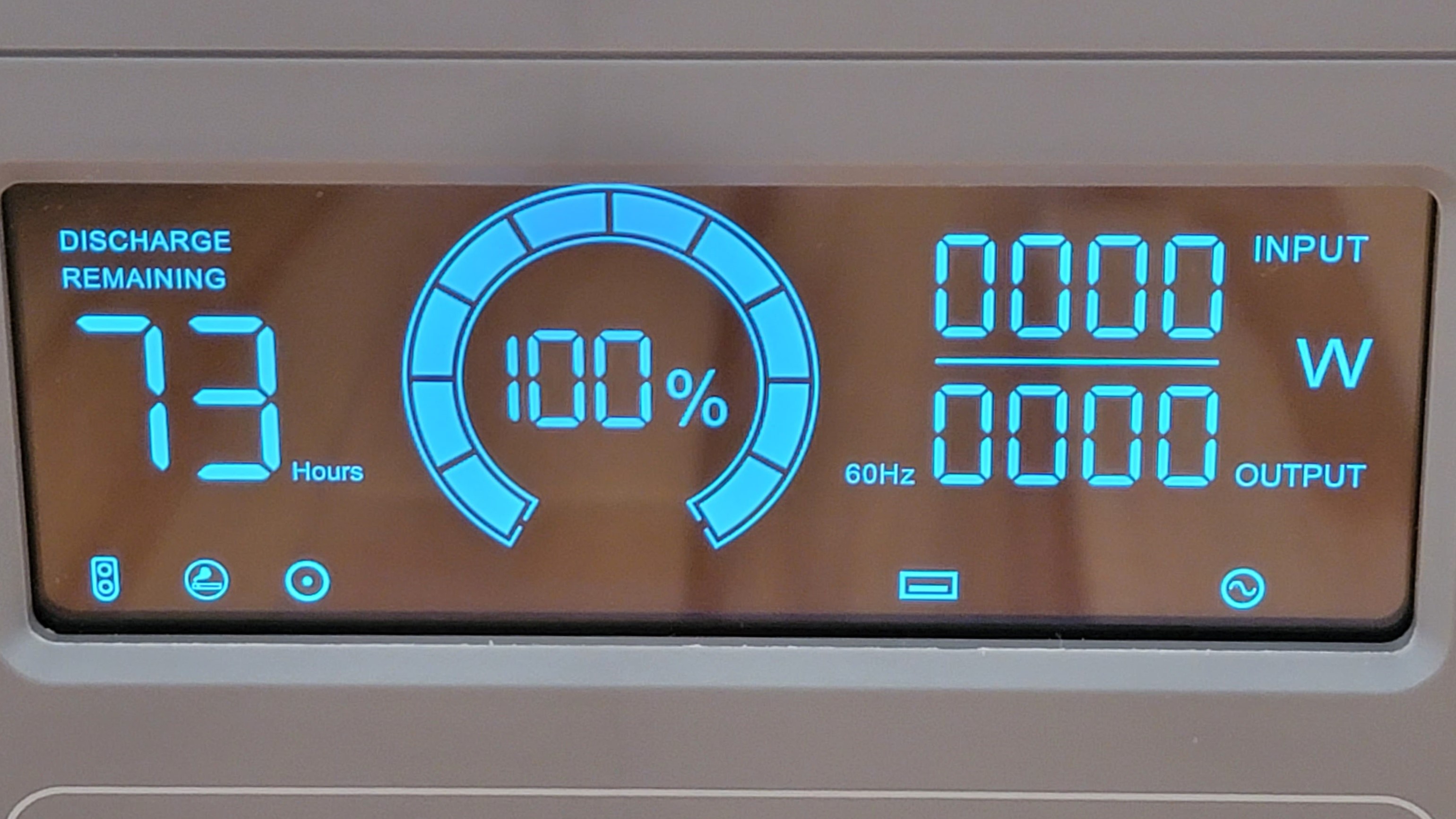
A high-contrast segmented LCD resides on the front panel and gives vital information about the station’s current state such as the charge and discharge time as well as real-time output power. Icons for input and output sockets show if the system is operating normally and will blink on any issue. For instance, the AC cord icon will blink on a power grid issue while the temperature icon will show if the internal temperature is out-of-range. Push buttons assigned to each output section can be pressed to enable them while pressing again turns them off.
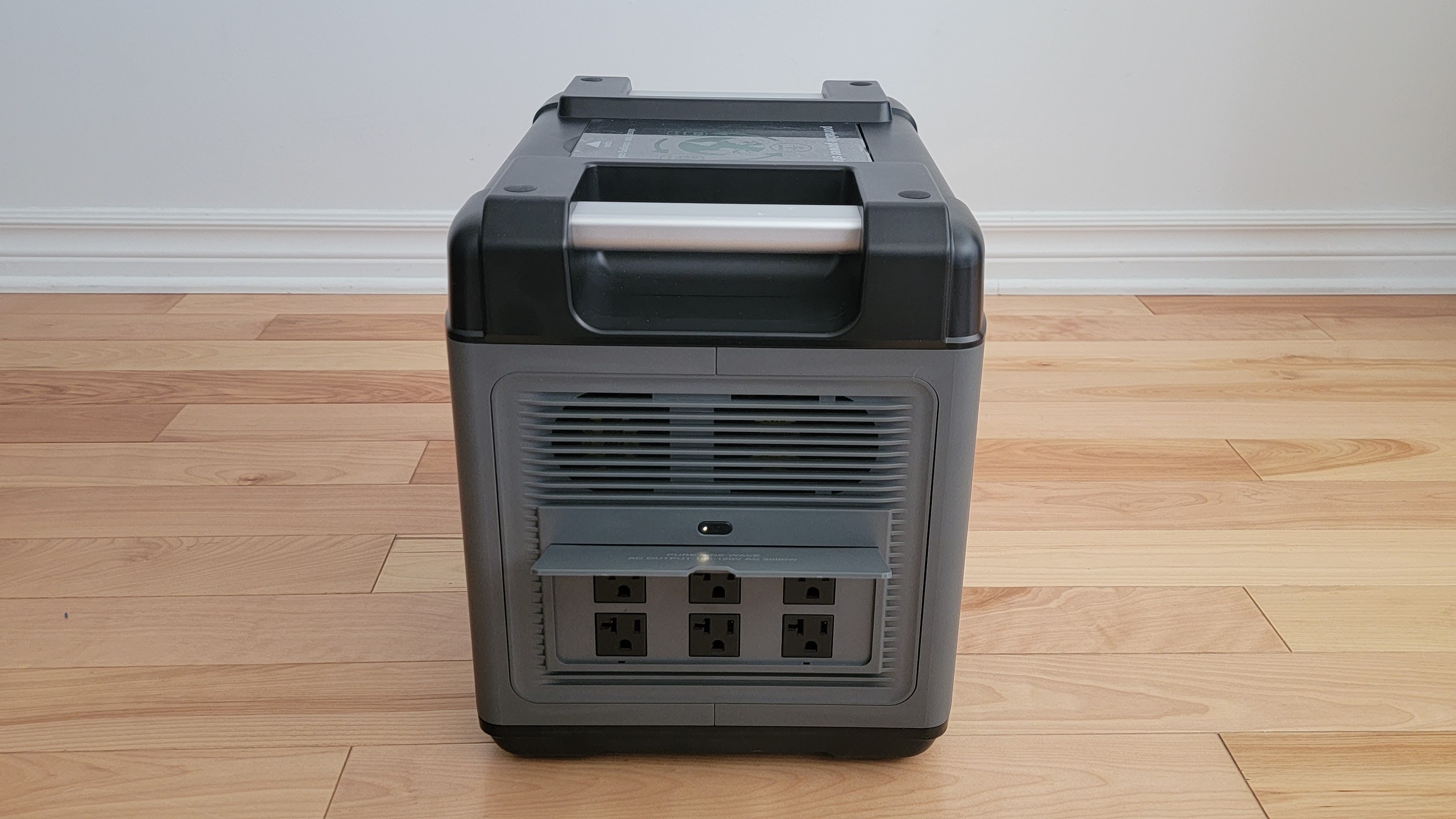
The AC section consists of six sockets all located on the right side of the case while the low voltage DC sockets are located on the front. Oukitel is generous with the DC sockets and includes ten arranged in two groups. Sockets for outdoor purposes are located on the left of the display. This group includes a cigar lighter and an XT60 socket, both concealed under a protective plastic cover, and two barrel-type DC5521 sockets. They all supply a fixed 12V but at different currents.
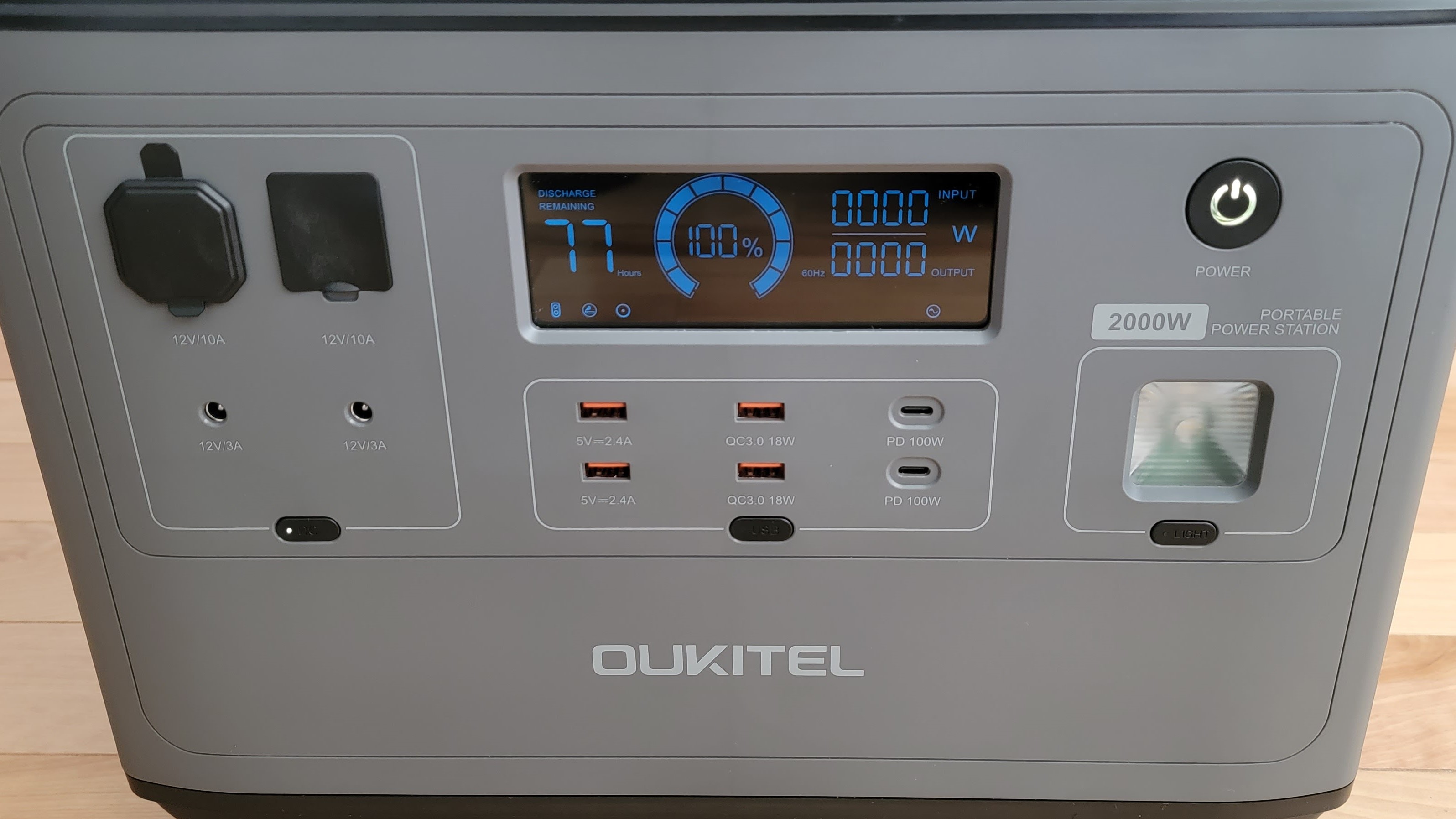
The second section which consists of only USB ports contains two 10W Type-A, two Type-A QC3.0 and a pair of 100W Type-C giving a total of 260W.
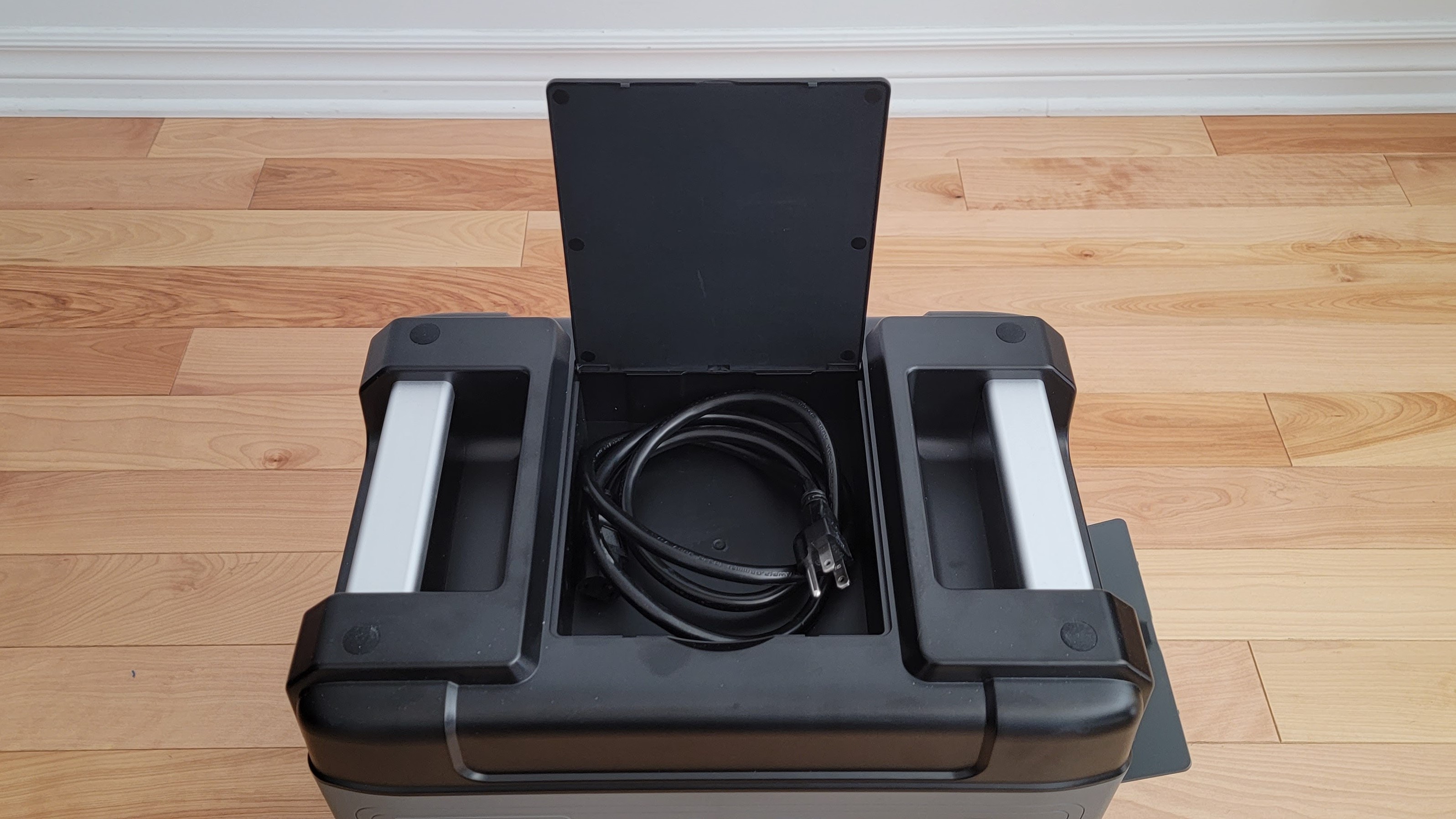
In use
Using the Oukitel P2001 is very simple thanks to a display that is not overcrowded. The battery level is shown in big at the centre of the screen. Other important information displayed are the input and output power which give an idea if output devices are working properly and not exceeding the station limits. The LCD has a blue tint and updates every second while the always on backlight will put an additional load on the battery albeit a small one. Output sections automatically turn off if nothing is connected after five minutes.
A feature that is rarely seen in other stations is the UPS mode. Devices connected to the P2001 do not lose power when the AC supply is disrupted. The switch-over from the AC line to battery is done within milliseconds which is sufficient to keep PCs and other office devices powered without losing any data. The UPS system is designed such that when there is AC power, connected loads are powered directly from the AC bypassing the battery. That way, there is no stress on the batteries which ultimately decreases wear and increases their lifetime.
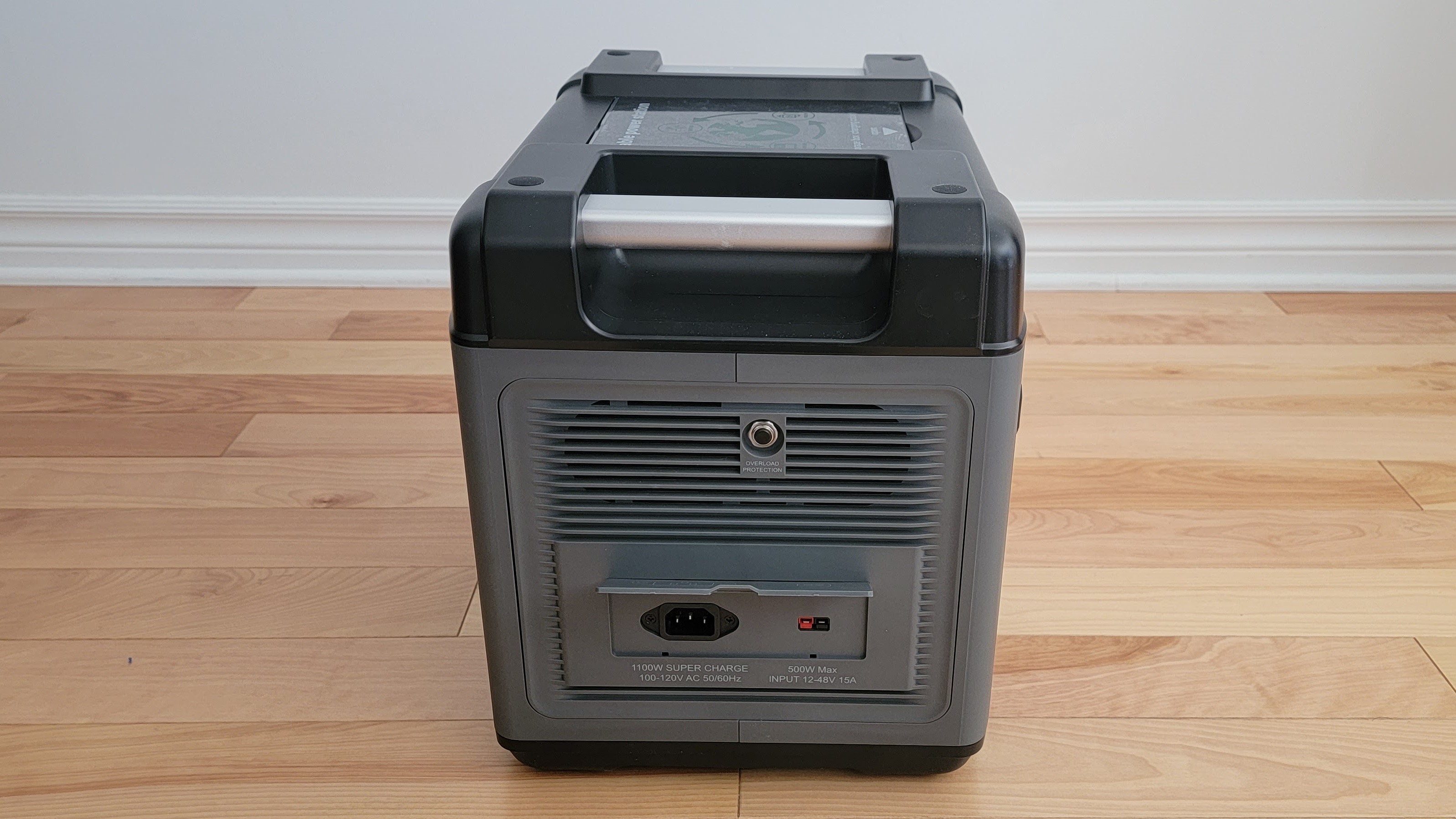
The Oukitel power station supports charging from AC and solar panels. Connecting both at the same time will reduce the time to fill the batteries. The MTTP compatible solar input in the form of an Anderson connector is located on the left and can accept up to 48V at 500W. This means having a maximum of four 100W panels in series giving a charging time of five hours. Oukitel offers a 200W panel, the PV200, for $499 during their Kickstarter campaign.
The inverter has been designed to support two types of output voltages namely the US (120V) and Japan (100V). The output frequency is also switchable between 50Hz and 60Hz allowing high-powered Japanese devices to run in North America without a transformer-based AC converter. Since the efficiency of the P2001 inverter is very high at 90%, there is little heat and fan noise generated when in use. Finally, the station supports an over-voltage protection on the input AC socket which does a shutdown in case of power fluctuations. This protection can be cleared by pressing the overload button located just above the AC input.
The competition
The Oukitel P2001 goes directly against the likes of Jackery Explorer 2000 and Bluetti AC200P. Other lesser known competitors such as Zendure have similar products that were launched recently.
The Jackery Explorer 2000 is probably the reference for this type of power station. The battery chemistry makes it less suitable as an investment since it offers only 500 charge cycles before the capacity falls to 80%, compared to the 2000 cycles of the P2001. The number of sockets offered by the Explorer 2000 is also less while it costs an extra $200.
Bluetti AC200P is also a good power station priced similarly to the P2001. It suffers from a convoluted user interface which can slow the use of the station in case of emergency. The block AC charger also does not help as it is limited to 400W and will fully charge the station in six hours, compared to two for the P2001.
The Zendure SuperBase Pro is another 2000W power station that stood out last year thanks to many innovative features such as having a built-in WiFi connection. Again, the SuperBase pro battery technology has less charge cycles while the MSRP is $400 more than the P2001.
Final verdict
The Oukitel P2001 has many qualities that can make it become a bestseller. The price and battery chemistry can turn into a good investment for the buyer. It can right away start to pay-off its $1900 price tag if used as an office UPS. The no nonsense user interface is also something that many people will like while the generous amount of DC sockets will also satisfy many needs. Finally, the build quality is also something that stands out. Covered by a one year warranty, the P2001 will surely find a place in many houses this year.
We've also highlighted the best portable power stations and the best portable laptop battery chargers
My interest has been piqued by everything electronic since a young age, with a penchant for the dark art of tearing things apart. My daily duty is to marry software and hardware modules and I have to admit that this is much harder than cooking. When I’m not busy at work, I’m on the lookout for the latest and greatest hack! I am passionate about portable power generators (or power stations) as well as maker products such as the Raspberry Pi and any similar SBC (single board computers)
